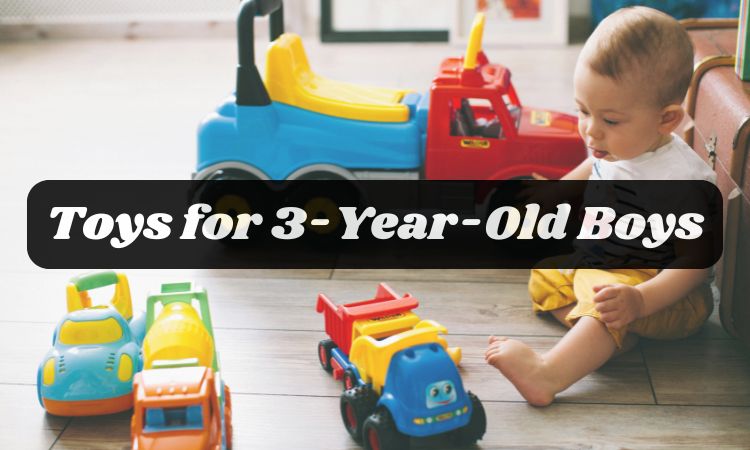Holding your newborn for the first time can feel both magical and a little nerve-wracking. Many new parents and caregivers often ask, “how to hold a newborn safely?” or “Am I doing this right?” It’s a valid concern, as newborns have delicate neck muscles and require proper support and gentle care during those early weeks of life.
In this guide, we’ll walk you through how to hold a newborn with confidence and comfort. From classic holds like the cradle to more specialized football hold, you’ll discover various positions that promote bonding, offer ergonomic comfort, and cater to your baby’s mood and needs. We’ll also cover key precautions to avoid common mistakes, so you can nurture your baby safely and with peace of mind.

How to Hold a Newborn
If you’re holding a newborn for the first time, it’s completely normal to feel a little unsure. Babies are tiny, delicate, and still figuring out how to move their bodies—so your support means everything. Follow these simple steps:
1. Wash Your Hands
Before you even think about how to pick up a newborn, always make sure that your hands are clean. Newborns have underdeveloped immune systems, making them prone to infections. Washing your hands with gentle soap or using hand sanitizer removes harmful germs, reducing the risk of transmitting bacteria or viruses.
2. Relax and Pick Them Up with Both Hands
Approach the baby with calmness. Babies can sense emotional states, so confidence and gentleness help keep them relaxed. Gently slide one hand under your baby’s head and neck, and the other under their bottom or back. Lift slowly and smoothly. Once you’ve got them in your arms, keep your hold secure but gentle. Try not to tense up.
3. Always Support the Head and Neck
This is the golden rule when learning how to properly hold a newborn—supporting their neck and head. A newborn’s neck muscles aren’t strong enough yet to support their own head, so you always want to keep one hand or arm under their head and neck. Whether you’re holding them upright or in a lying position, proper support is key to keeping your baby safe and comfortable.

4. Keep Baby Close
Bring your baby close to your chest whenever possible. It’s not just good for bonding—it also gives your baby a sense of warmth and safety. They’ll hear your heartbeat, feel your breath, and settle more easily in your arms.
5. Watch for Comfort and Breathing
As you hold your baby, make sure their face is always clear and not pressed into your clothing or skin. Their nose and mouth should be free so they can breathe comfortably. If they’re squirming or seem fussy, it could be a sign that something needs adjusting—don’t be afraid to shift slightly until you both feel comfortable.
Different Baby Holding Positions
Once you’ve got the basics down—supporting the head, staying calm, and keeping your baby close—you can start exploring different holding positions. Each one has its own purpose, whether you’re soothing a fussy baby, feeding, or just spending some quality bonding time.
1. Cradle Hold
This is probably the most classic and natural way to hold a baby—and a favorite for many new parents.
How to do it
- With your baby already securely in your arms, slide their body horizontally across your torso.
- Rest their head in the crook of your bend-in elbow, facing you.
- Let the same forearm run the length of their back while your opposite hand supports their bottom or thigh.
- If you’re feeding, line your baby’s ear, shoulder, and hip in a straight line. This keeps swallowing easier and more comfortable.
Why it’s great
- Perfect for everyday cuddles, breastfeeding, or rocking your baby to sleep.
- Keeps baby’s head slightly elevated, which can help with reflux.
- Lets you maintain eye contact, boosting bonding and early social cues.
2. Shoulder Hold
If your baby likes to look around or needs help burping after a feed, the shoulder hold is a great go-to.
How to do it
- Lift your baby so their chest rests against yours and their head is on your shoulder.
- Use one hand to support their head and neck while your other hand firmly supports their bottom.
Why it’s great
- A go-to position for burping after feeds—gravity helps bubbles rise.
- Gives baby a great view of the room, which can be calming during “witching hour.”
- Allows for easy skin-to-skin contact inside an open shirt or robe.

3. Football Hold (or Clutch Hold)
Despite the name, this position is especially popular with breastfeeding parents—it keeps your baby tucked at your side while giving you more control over their head.
How to do it
- Tuck your baby under your arm on the same side as the breast you’re feeding from, feet pointing toward your back, like a football.
- Rest their neck and head in your open palm while your forearm supports their spine.
- Use a pillow to boost your elbow so you’re not hunching forward—your shoulders will thank you later.
Why it’s great
- Fantastic for breastfeeding parents with larger breasts, twins, or after a C-section (no pressure on the incision).
- Keeps baby’s face completely visible, making latch adjustments simple.
- Frees up your other hand for guiding the breast, stroking baby’s cheek, or sipping water.
4. Lap Hold
This one is great for some calm face-to-face time, especially with a newborn who’s alert and awake.
How to do it
- Sit with both feet flat on the floor and knees together.
- Lay your baby face-up along your thighs, with their head near your knees and feet toward your torso.
- Support the head with both hands and by slightly tilting your knees upward.
Why it’s great
- Encourages eye contact—great for early social and visual development.
- Ideal for gentle play, infant massage, diaper check, or post-bath lotion time.
- Gives older siblings or grandparents a safe, seated option for holding baby.
5. Belly hold (Tummy Down Hold)
This position can be great for soothing gassy or fussy babies.
How to do it
- Position your baby tummy-down along your forearm, head near your elbow, legs draped on either side of your wrist.
- Use your free hand to stabilize their position and gently massage their back to alleviate discomfort.
Why it’s great
- Gentle pressure on the abdomen helps ease gas, colic, or fussiness.
- Gives baby a break from lying on their back while awake—a mini dose of tummy time.
- The rocking motion of your arm can be extra soothing during evening grumbles.
What Not to Do When Holding a Newborn
By now, you’ve learned the best ways to hold your newborn—but just as important is knowing what not to do. Even the most loving, well-meaning caregivers can make simple mistakes, especially when they’re running on little sleep or juggling a million things at once.
Here are some common don’ts to keep in mind:
Don’t Forget Head and Neck Support
Newborns have very weak neck muscles, so their heads can flop back if not supported properly. Always keep one hand under the head and neck—especially when picking them up, putting them down, or changing positions. Until about 3–4 months of age, they can’t hold their head up on their own.
Don’t Jostle, Shake, or Bounce Too Roughly
Babies are not built for fast or jerky movements. Shaking a newborn, even in play, can lead to serious injuries like shaken baby syndrome. If you’re trying to soothe a fussy baby, go for slow, gentle rocking or swaying motions instead.
Never Pick the Baby Up by Their Arms
Newborns have very soft joints and delicate muscles in their shoulders and arms. Pulling or lifting them by the arms can strain their joints or even cause a condition called nursemaid’s elbow, where a ligament slips out of place.
Instead, always scoop your baby up by sliding one hand under their head and neck, and the other under their bottom or back. This supports their whole body evenly and keeps their limbs safe from stress or injury.
Don’t Let Baby’s Face Press Into Your Chest or Clothing
Always make sure your baby’s nose and mouth are unobstructed when you’re holding them close. If their face is buried in your shirt or tucked too tightly into a sling, it can restrict their breathing. Keep their airway clear and their chin slightly up, not slumped into their chest.
Don’t Hold Baby While Multitasking
It might be tempting to carry your baby in one arm while making coffee or reaching for something with the other. But even quick tasks can lead to accidents if your attention is split. Always stay fully focused when you’re holding your newborn—if you need to do something else, gently place them in a safe spot like a bassinet or baby swing first.
Don’t Panic If Baby Starts Crying
Babies cry—it’s how they communicate. If your baby fusses while you’re holding them, it doesn’t necessarily mean you’re doing it wrong. Check if they’re hungry, tired, need a diaper change, or just want a different position. Stay calm and try adjusting your hold or offering some gentle movement.
Sometimes, a little extra soothing can go a long way. You can try offering age-appropriate calming aids—toys for newborns to 1-year-olds like rattles or baby music players that play nursery rhymes, bedtime stories, lullabies, or white noise. These can help distract and comfort your baby while you hold them, especially during fussy periods.

Conclusion
When it comes to how to hold a newborn, there’s no one “perfect” way—but there is a right way to support their little head and neck and make sure they’re safe and comfy in your arms. As you try different positions—whether it’s cradling them during a quiet moment or using the shoulder hold to help with a gassy tummy—you’ll figure out what works best for you and your baby. It’s all about finding your rhythm and paying attention to how your baby responds. And remember: the more you practice, the more natural it’ll feel.
FAQ
What is the correct way to hold a newborn?
To hold a newborn safely, always support their head and neck—they need your help since their muscles aren’t developed yet. Cradle them close to your chest or lay them in the crook of your arm, making sure they’re snug and secure.
What should you not do while holding a newborn?
It’s best not to multitask when holding your baby—hot drinks, cooking, or any activity that could cause accidents should wait. Avoid sudden movements like tossing or shaking, even in play, as their delicate little bodies can’t handle it yet. Stay present, focus on your baby, and enjoy those cuddly moments.
What is the 5/8 rule for babies?
The 5/8 rule is a soothing technique to help babies fall and stay asleep. You hold and walk with your baby for 5 minutes to help them drift off, then sit and continue holding them for another 5 to 8 minutes. This allows the baby to enter a deeper sleep before being gently laid down, reducing the chances of waking up.
Which week is the hardest for a newborn?
The first week is often considered the hardest for both newborns and their parents as everyone adjusts to new routines and the demands of life outside the womb. Babies are adapting to their new environment, feeding, and sleep patterns, while parents may be coping with sleep deprivation and learning to properly care for their newborn. Such a period can be overwhelming, but it gradually eases as routines start to form.







Share and get 5% off!
Simply share this product on one of the following social networks and you will unlock 15% off!